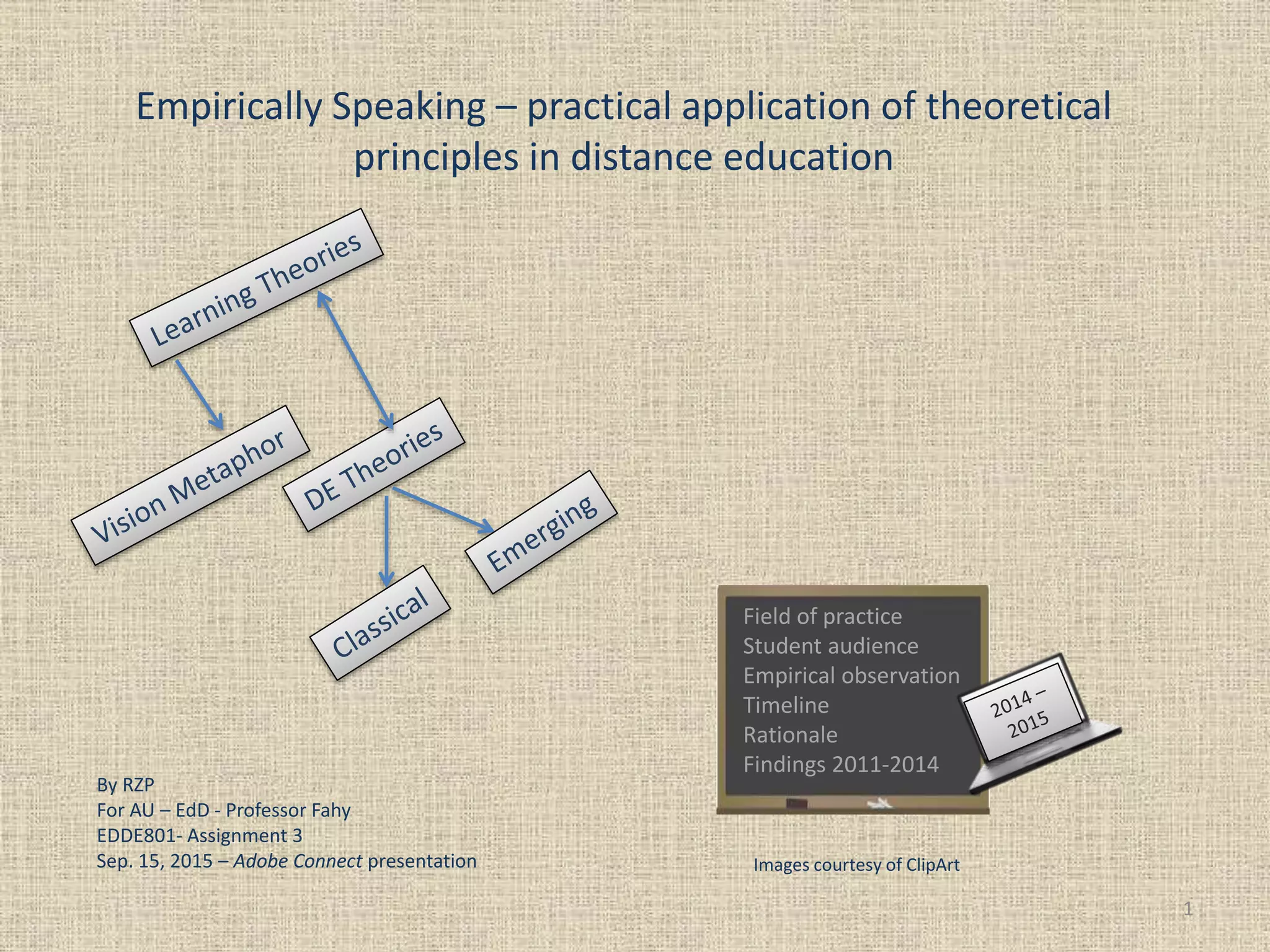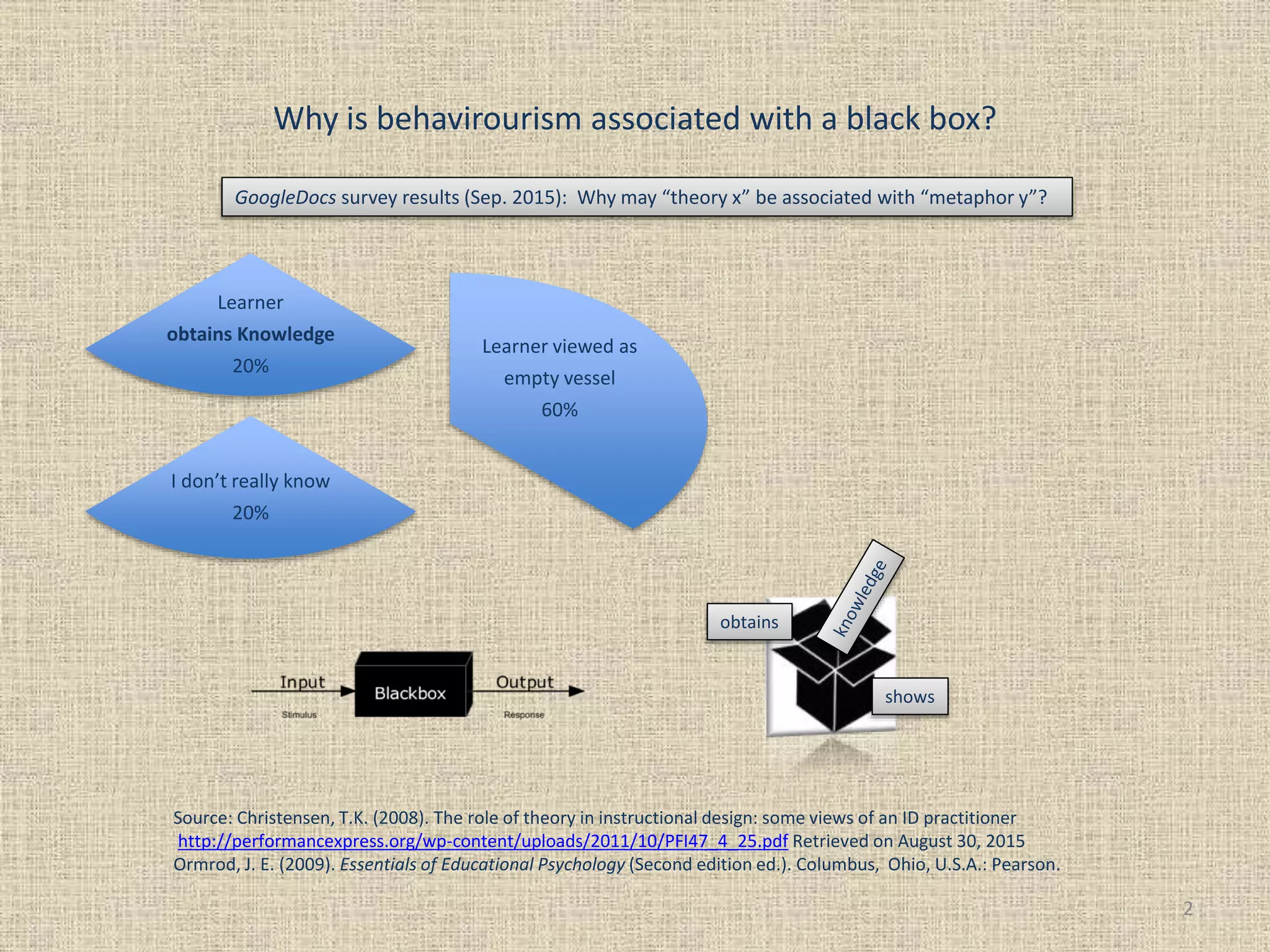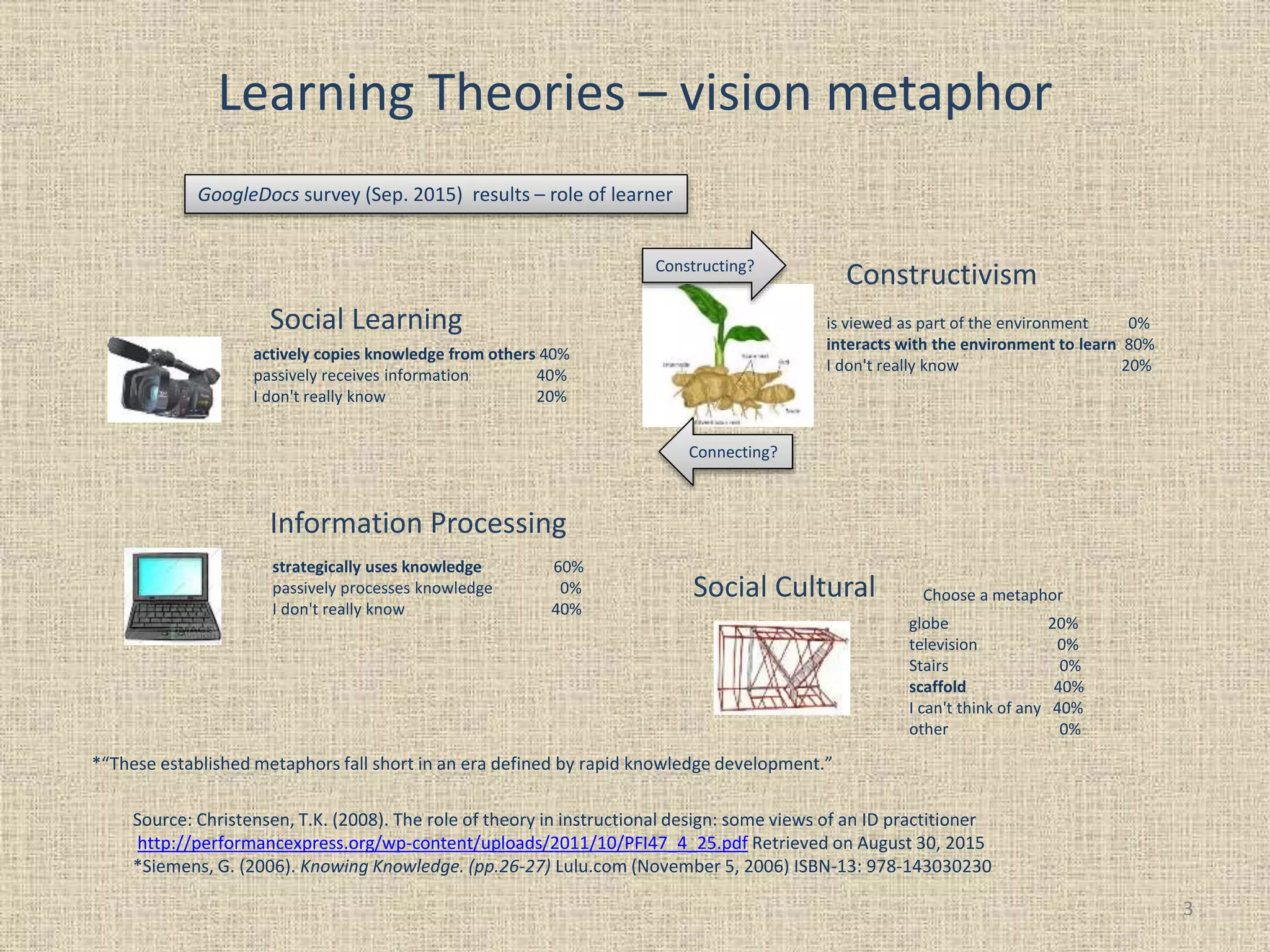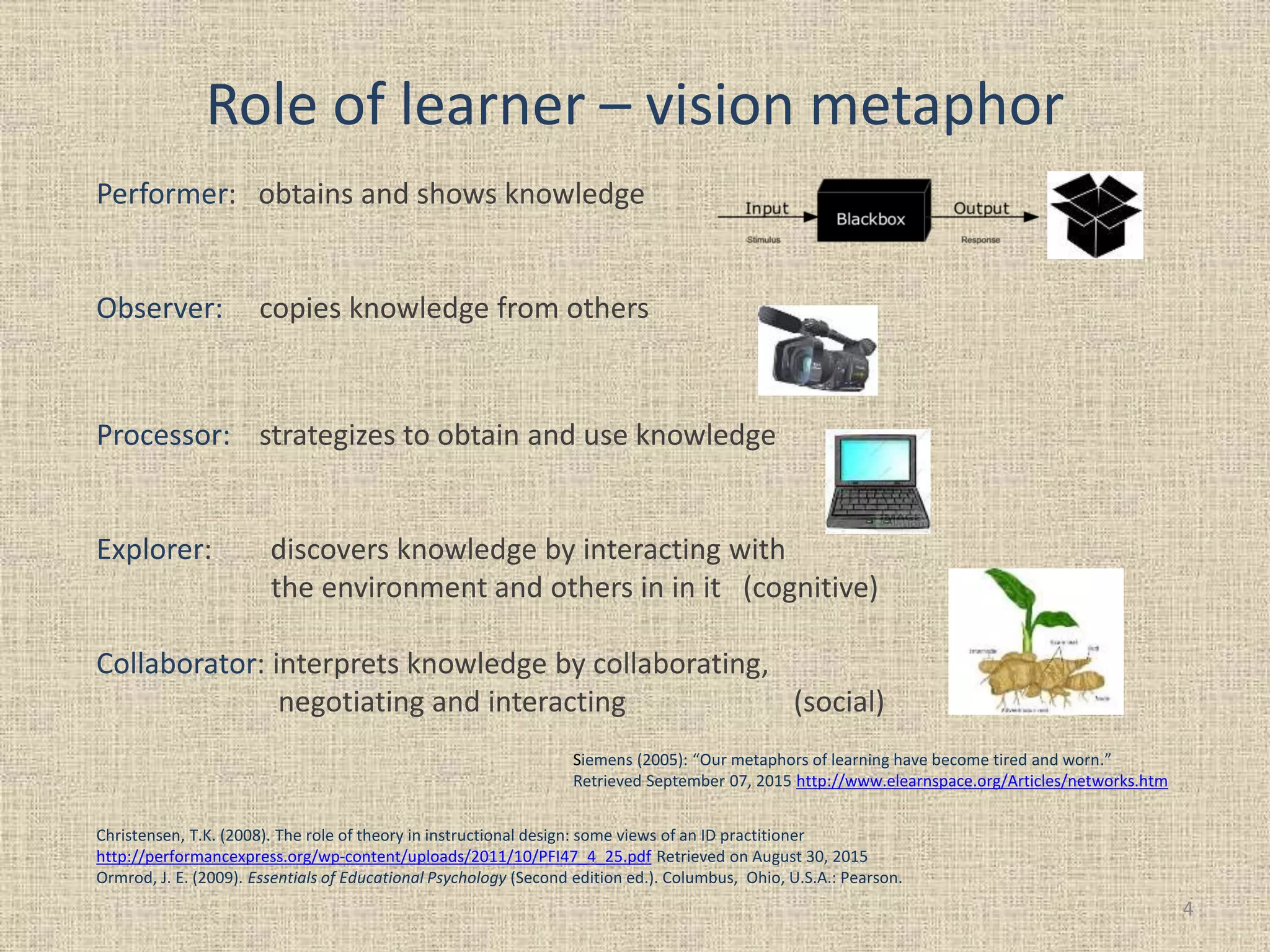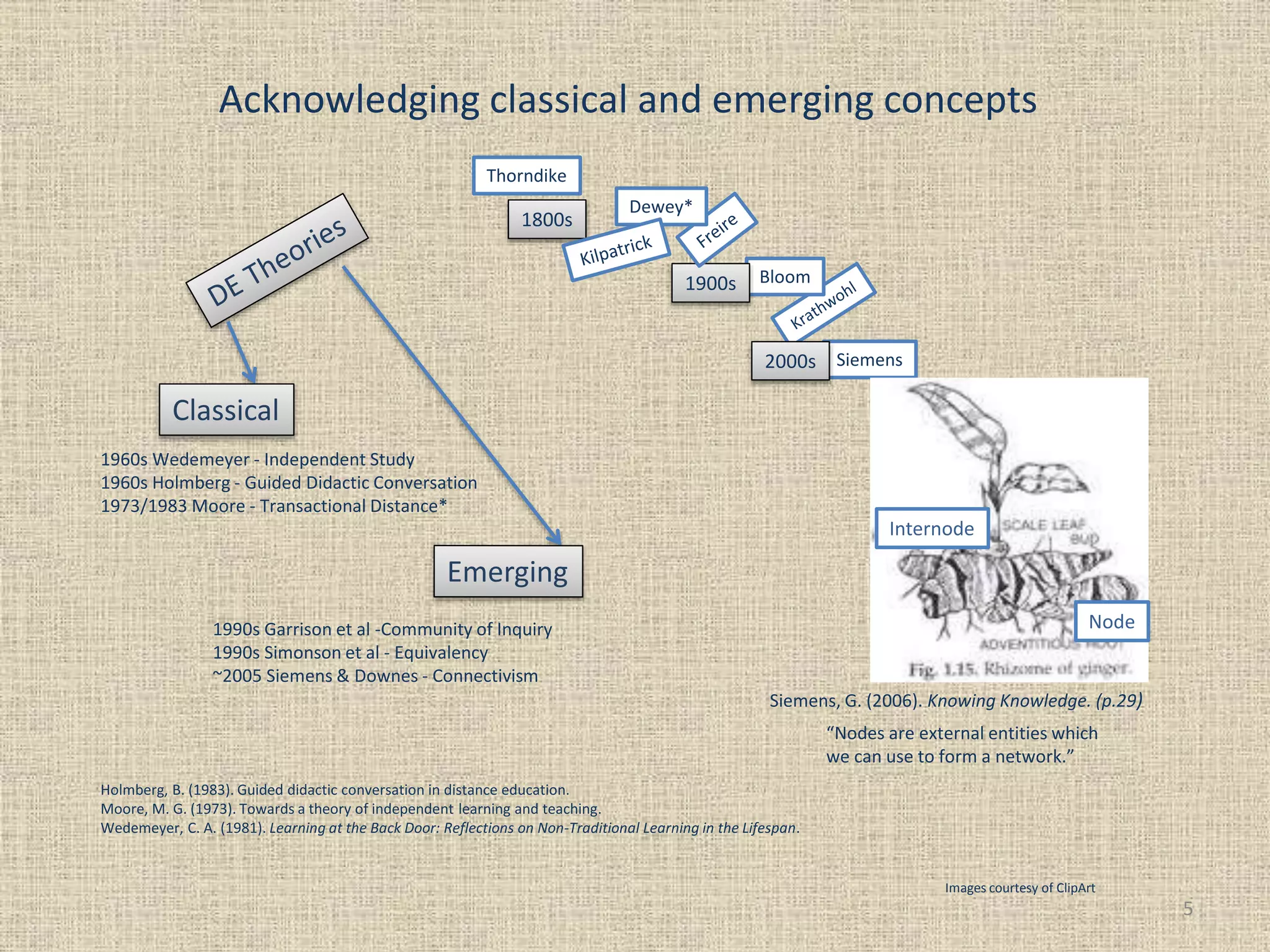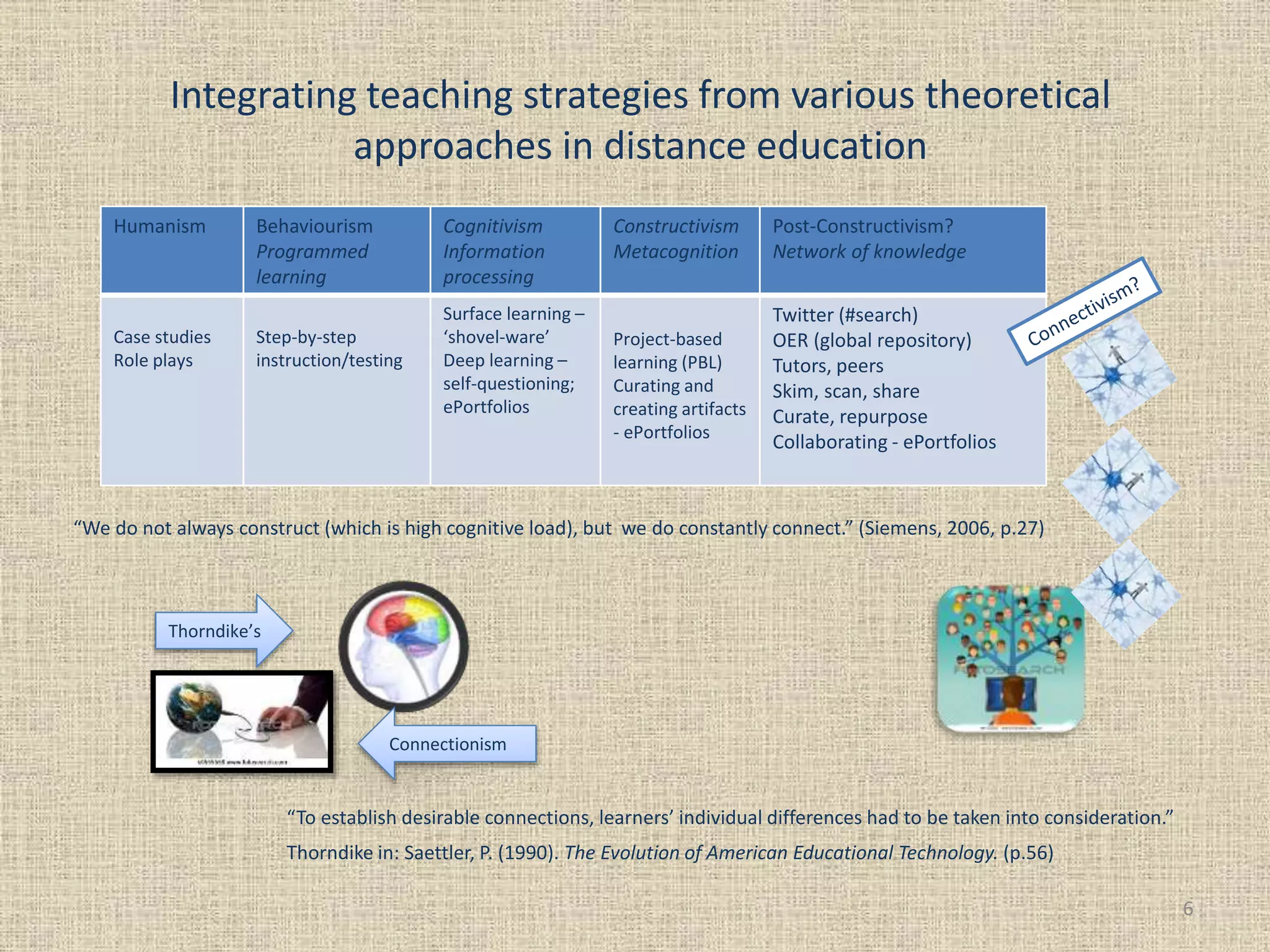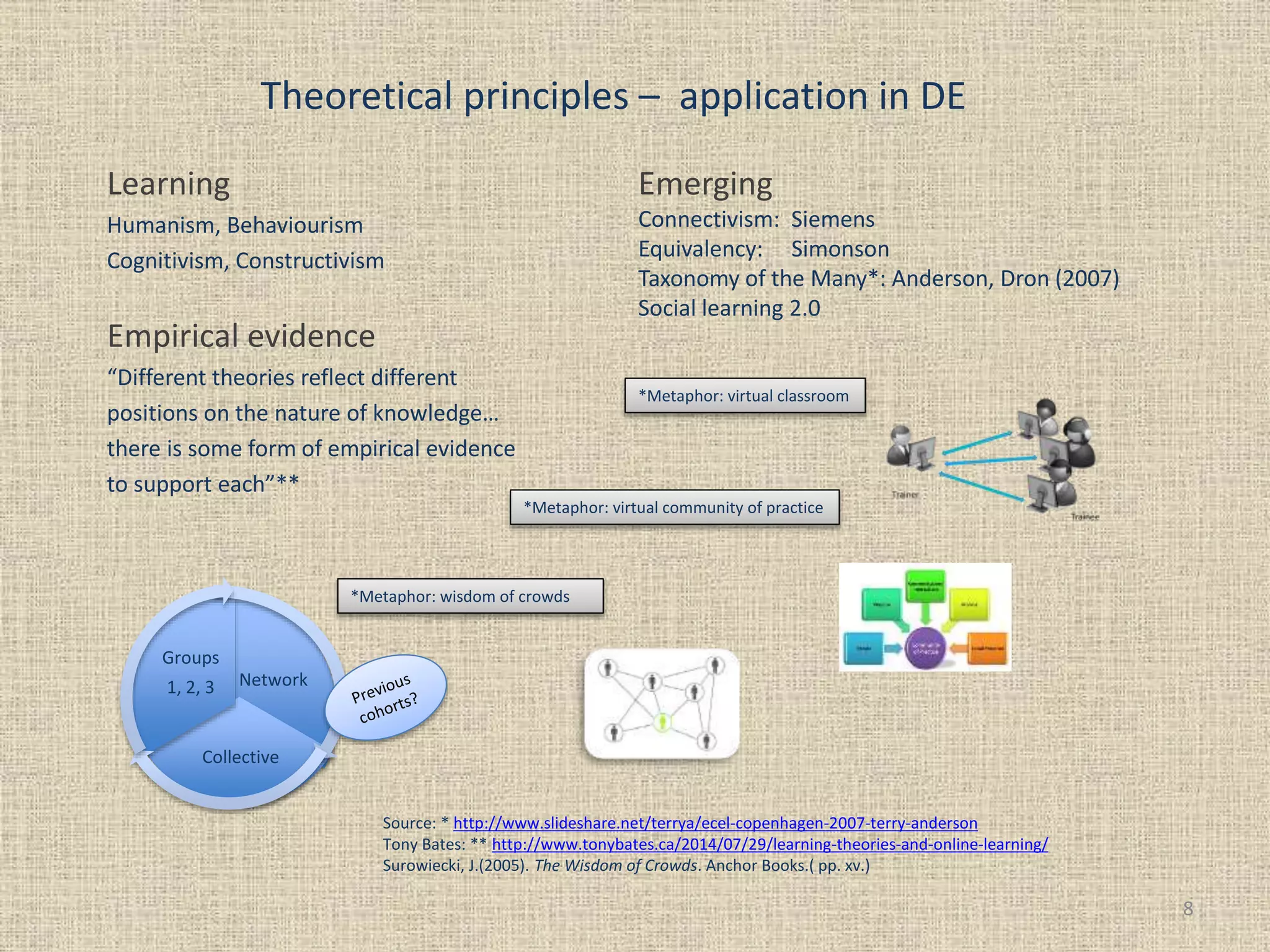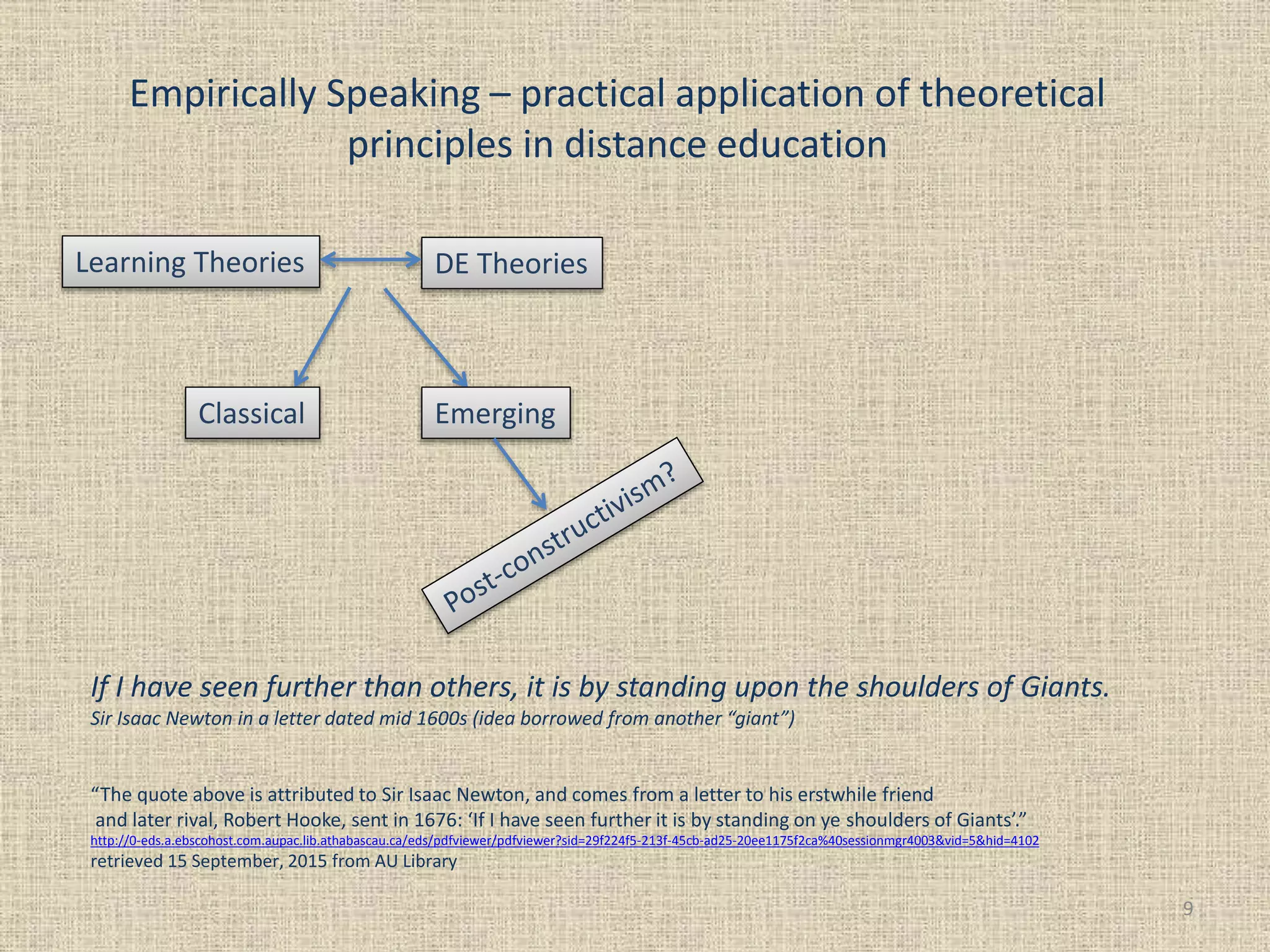The document presents an exploration of the application of theoretical principles in distance education, discussing various learning theories and their relevance. It emphasizes the importance of incorporating empirical observations and integrating multiple teaching strategies to cater to diverse learner needs. Additionally, it critiques established metaphors of learning and advocates for a more dynamic understanding of knowledge construction.
